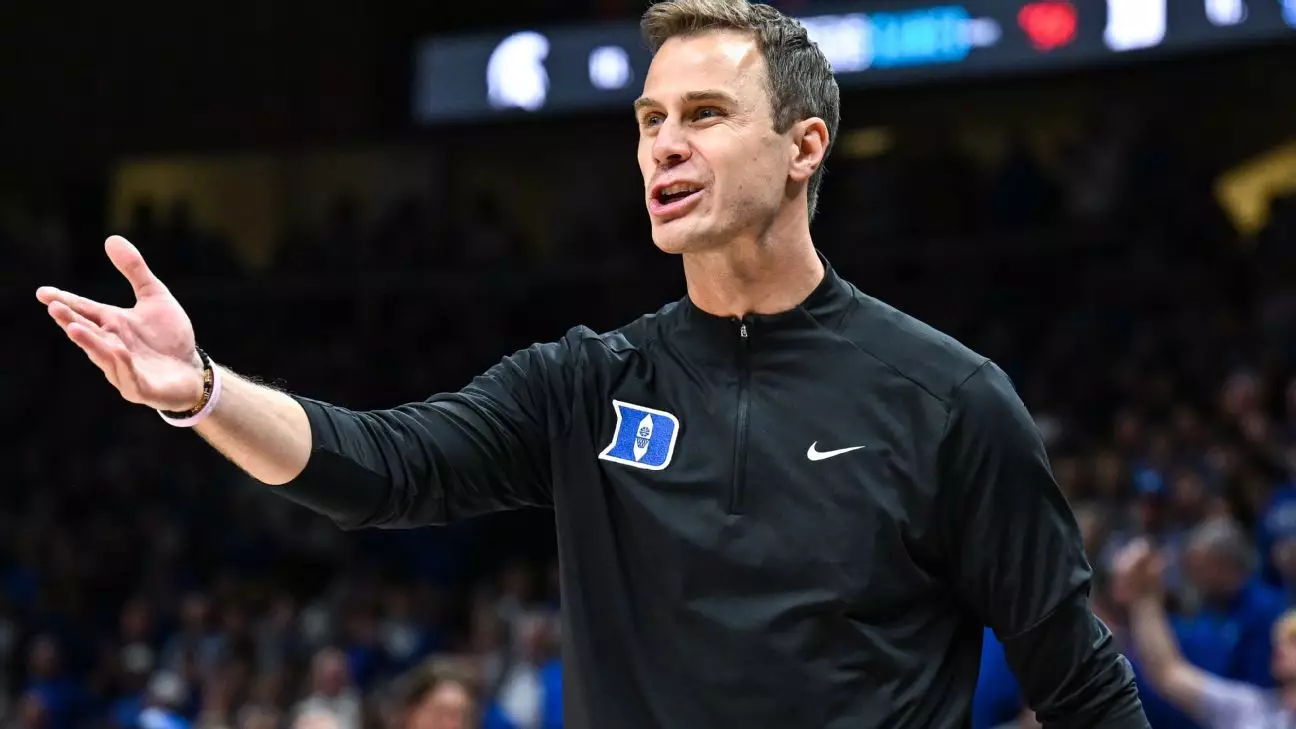In the realm of collegiate athletics, injuries are an unfortunate yet prevalent aspect of competition. However, a recent trend within the Duke University basketball program has raised eyebrows and sparked concerns among coaches, players, and spectators alike: the issue of cramping among its star freshman players. Following a narrow defeat against Kentucky, where both Khaman Maluach and Sion James faced significant physical setbacks, the question arises—what measures can be implemented to mitigate this alarming trend and safeguard the health of these young athletes?
Khaman Maluach, a towering 7-foot-2 center anticipated to be a high draft pick in the upcoming NBA lottery, found himself a shadow of his potential during the exhilarating showdown against the University of Kentucky. Limited to just 10 minutes in the second half due to cramping, his performance was undeniably hampered. Scoring 10 points and grabbing 7 rebounds, Maluach showcased glimpses of his talent, yet his inability to maintain endurance on the court ultimately contributed to the Blue Devils’ 77-72 loss.
Not to be overlooked, the unfortunate exit of reserve guard Sion James due to a shoulder injury compounded Duke’s struggles on the court. After sustaining a hard hit during the game, James momentarily returned but soon found himself unable to continue, prompting Duke’s coach, Jon Scheyer, to express unease regarding the physical toll taken on his roster.
What makes Duke’s situation particularly troubling is that this is not an isolated incident. Earlier in the season, during a home matchup with Army, star freshman Cooper Flagg also faced cramping that significantly limited his effectiveness. Flagg’s subsequent performance against Kentucky—32 minutes of play, tallying 26 points and 12 rebounds—evidences resilience but also raises the concern of how chronic cramping can pose long-term risks to player health and performance.
The repeated nature of these occurrences begs the fundamental question: are current training regimens and recovery protocols adequately addressing the physiological demands placed on these young athletes? Jon Scheyer implemented a stern approach post-game, stating, “We can’t have that happen,” indicating an urgent need for a comprehensive review of the team’s training and nutrition strategies. Young players’ bodies are still adapting, and Duke must identify and address the underlying causes of these debilitating cramps.
Several factors could contribute to cramping, particularly in high-pressure situations like those experienced by the Blue Devils. Dehydration is a prime suspect, especially during demanding games played at high intensity. Furthermore, the physical toll and stress of a rigorous schedule can compound fatigue, leading to a greater risk of muscle cramps. Nutrition plays an essential role as well—athletic diets must prioritize hydration, electrolytes, and recovery. A detailed review of each player’s regimen is imperative to address these vulnerabilities.
Another aspect to consider is the psychological pressure athletes face at the collegiate level. The weight of expectations can lead to overexertion, particularly among freshmen eager to prove themselves. Scheyer’s acknowledgment of the young bodies needing support indicates not only a physical need but also a mental one. It’s vital for coaches to foster an environment where players feel empowered to communicate their physical limits without the fear of criticism or diminished playing time.
Duke’s coaching staff must take definitive action to resolve these ongoing cramping issues. This may include an increased focus on tailored conditioning programs that gradually promote stamina and strength, ensuring players adapt at a safe pace. Collaborating closely with sports nutritionists could enhance players’ diets, emphasizing hydration strategies before, during, and after games.
Additionally, organizing workshops that educate athletes on the importance of listening to their bodies can encourage a proactive approach to managing fatigue.
As the Blue Devils navigate the challenges posed by cramping among their players, the stakes extend beyond the immediate game outcomes. The long-term health and performance readiness of young athletes hinge on effectively addressing these issues. Jon Scheyer’s commitment to tackling this problem head-on is commendable, but it requires sustained effort and collaboration from all facets of the program. By improving training practices, nutrition, and player education, Duke can ensure that its young stars remain formidable competitors while safeguarding their health for the future.

Leave a Reply